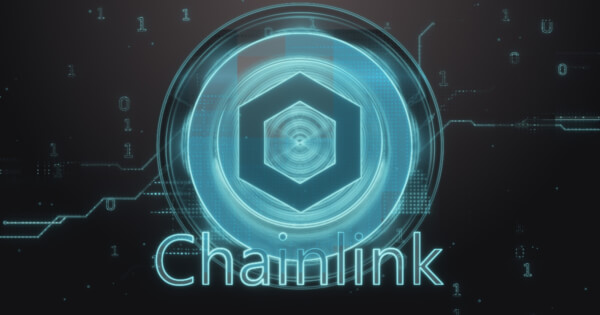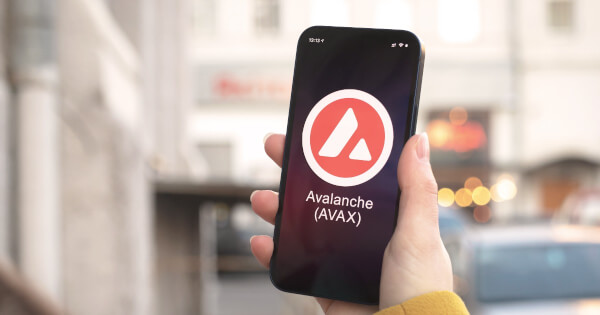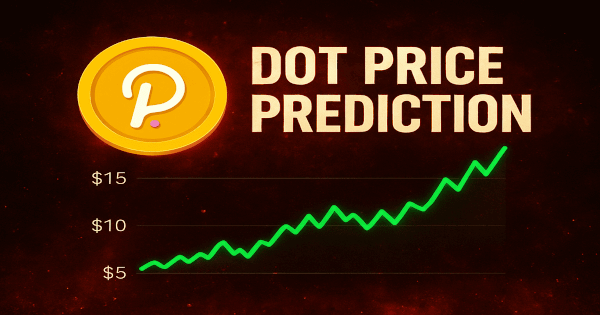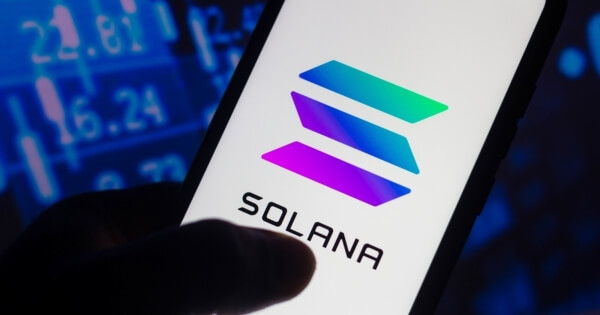A guest post by **@therollupco** Co-Founder **u/ayyyeandy** on X about why we MUST modularize this year.
Modular Blockchains are already shaping up to be the biggest zero-to-one innovation in crypto since Ethereum
Following the highly anticipated launches of Celestia and Dymension, the expectations for upcoming modular ecosystem project launches are extremely high.
With dozens of tokenless protocols preparing to launch on mainnet this year and the modular narrative seeping through all cracks of crypto media, I believe we are at the cusp of an expansion similar to what took place after the inception of smart contracts.
We recently put out a modular ecosystem map showcasing 100+ teams leading the modular expansion. In today’s piece, you’ll learn what a modular blockchain is, the ins and outs of the modular stack, and my vision for the modular endgame.
To start, let’s answer a seemingly simple question: What is a Modular Blockchain?
Modular blockchains specialize in a specific operation rather than striving to do all core functions at once.
Their fundamental principle is unbundling blockchain functions into individual, specialized modules and performing one of those jobs very well while outsourcing the rest.
The modular blockchain design separates the key functions (Data Availability & Consensus, Settlement, and Execution) into specialized parts to create the most scalable, efficient blockchain design possible
You can think of a modular blockchain as having specific codebases/chains for each specific function, which together create a greater output than one integrated blockchain trying to do it all A lot of what modular blockchain designs are trying to accomplish is reaching maximum scalability without sacrificing the core principles of why we are building crypto in the first place
For the rest of this piece, we will explore how each layer of the stack leads to the modular endgame
- Data Availability Layer Unpacked
The goal of the data availability (DA) layer is to cheaply and securely verify that a given block’s data has been published successfully to the network and is accessible by all network participants. Verifiability is a core benefit of using blockchains for any transaction
Data availability is at the heart of verifying whether or not data has been published and is accessible by every node in a network
As users conduct transactions and rollup sequencers batch these transactions into individual blocks, the verification process of the DA layer begins. Upon successful verification, the block is then added to the chain.
Celestia launch in November 2023 started the emergence of Alternative Data Availability (altDA) layers, while the Dencun upgrade has recently increased the scale of Ethereum L2s using Ethereum for DA with blobspace (a data storage solution), the limitations of blobspace are more restrictive than using an altDA solution.
However, it is to be noted that posting data directly to Ethereum L1 attains the highest level of security and decentralization, as seen below
Celestia focuses solely on ordering transactions and making transaction data available, rather than being focused on smart contract execution, Celestia outsources this to rollups as part of its focus on providing extremely low costs.
This minimalism allows for maximum performance in a specialized manner
Celestia excels in data availability through Data Availability Sampling (DAS), which is accomplished by light nodes verifying data without needing to download entire blocks
AvailProject is an upcoming data availability layer that utilizes KZG commitments, erasure coding, and validity proofs for mathematical DA guarantees, along with light client data availability sampling.
Avail is also building two other products, Nexus and Fusion, which will tackle cross chain communication and liquidity, as well as shared multi-token security
The other data availability layers on my radar are **@eigen_da**, **@NEARProtocol**, and **@0G_labs**' Zero Gravity
- The Execution Layer
The execution layer (also known as Virtual Machine Layer) is a part of the modular blockchain stack which specializes in processing and executing smart contracts and transactions.
The most notable of the VMs is the EVM, the virtual machine which powers Ethereum’s execution. You can create any type of smart contract or program using the EVM, which was the massive breakthrough for innovation ushered in by Ethereum in 2016.
As an Ethereum evangelist, I must say it’s difficult to have negative opinions about EVM. It has dominated the VM landscape, serving as the backbone for countless decentralized applications, and for good reason. It has the best developer tooling and infrastructure in crypto by far.
You can create any type of smart contract and program using the EVM, which has inspired the "programmable money" narrative.
However, I believe that 2024-2025 are the years of the novel execution layer, termed “altVM” or “next-gen VM” in the modular space.
High-performance, secure, parallelized execution environments will eventually become the standard as rollups and applications aim to reduce congestion and operate in high throughput environments
This idea is not about abandoning Ethereum but about embracing diversity and exploring new possibilities for user experience and continuous experimentation
One of the biggest innovations of altVMs is the idea of parallel execution, also known as local fee markets
At any given time on Ethereum, there are various different types of transactions happening simultaneously.
People are swapping, buying and selling NFTs, yield farming, and doing a ton of other onchain actions while paying for blockspace.
Within the EVM, there is a global fee market and serial execution. This means there is a single gas fee for all transactions regardless of the type of transaction or what blockchain ‘state’ this transaction touches.
Remember the BAYC Otherside mint? I do. Gas fees were $2,000+ for a single swap. This is where parallelization comes in
By separating the ‘state’ that a particular type of transaction affects, you can have many users operating on different applications without seeing massive gas spikes onchain
The current notable execution environments are:
- Web Assembly (Wasm) from **@fluentxyz**
- MoveVM from **@movementlabsxyz** and **@PontemNetwork**
- LinuxVM from **@cartesiproject**
- FuelVM from **@fuel_network**
- CairoVM from **@StarkWareLtd**
- SolanaVM (SVM) from **@EclipseFND**
- zkVM from **@RiscZero**
These teams are building rollups using altVMs to boost throughput and security at the execution layer
While the first quarter of 2024 has been around the emergence of data availability, I believe the second half of 2024 is going to be dominated by next-gen VM rollups and parallelized EVM
- Settlement Layer
For the purpose of this article, I’ll argue that Ethereum is the dominant settlement layer for the modular stack
Ethereum is the home of dozens of rollups that rely on the native security properties of the Ethereum validator set for economic security
Many of the rollups mentioned above in the execution section will be using Ethereum.
However, what is particularly interesting is we are currently seeing many of the traditional “monolithic” chains move towards scaling in a more modular approach -- **@avax** has subnets
There’s chatter about Solana needing to scale with rollups
**@dymension** and **@initiaFDN** are their own L1s with rollups built atop them
The settlement layer has been one of the least talked about parts of the modular stack, and, for now, it seems that Ethereum will continue to dominate as the best settlement layer for rollups
However, in the near future, I think we will see sovereign rollups settle directly to Celestia as well, and other alt-L1s will launch their own rollup frameworks to fight the gravitational force of trying to scale a single-state machine in a decentralized fashion
- Interoperability Is A Must
The modular blockchain stack toolkit is making it easier to launch and customize blockchains than ever before
Notably rollup-as-a-service (RaaS) providers like **@gelatonetwork**, **@Calderaxyz**, **@conduitxyz**, and **@alt_layer** along with rollup frameworks like Initia & Dymension, are facilitating 5-minute deployments of rollups via no-code interfaces. This is leading to an explosion in new modular chains being launched
However, with all these new chains comes the ultimate tradeoff of fragmentation
Fragmented liquidity causes worse slippage on bridging and trading.
Fragmented user experiences across several chains with different wallets, DEXs, and bridges can be overwhelming.
So, how can we unify the liquidity and UX? If blockchains are this easy to launch, shouldn’t it be just as easy to connect them?
Traditional interoperability providers need to manually deploy on chains one by one and require chains to lobby them for deployments. This is a massive bottleneck for new chains and stunts their onboarding growth
There are several interoperability protocols leading the way for the ongoing expansion of chains such as **@Hyperlane_xyz** building a permissionless interoperability framework
**@union_build** focused on zk-light client interoperability, **@OmniFDN** with their Open Liquidity Network standard, **@MitosisOrg** with their liquidity protocol, and Catalyst with their **@CatalystAMM**
The other interesting niche for interoperability is shared sequencing, which has been pushed forward recently by Ethereum Foundation researcher **@drakefjustin**
This is a mechanism which connects rollups for atomic execution via a shared sequencer
These solutions are being tested in production now, and I expect the leaders in this sector to launch them this year
Modular interoperability completes the modular stack and enables the unification of the modular ecosystem in a world of 10,000+ rollups
- The Modular Endgame
In conclusion, modularity is all about building a system that is greater than the sum of its parts
Those who believe in a modular future believe in a future of optionality
We believe that offering a more adaptable and less restrictive developer experience will onboard more non-crypto native developers and bring innovation
We also believe in sovereignty -- we believe that apps shouldn’t have to compete with each other for blockspace
Apps moving towards being their own chain will bring a far better user experience and increased flexibility for builders. The era of scarce blockspace is coming to an abrupt halt
We are in the early innings of a massive multi-year shift in the way builders operate and build applications onchain
As we embark on the modular expansion, we will continue to see unparalleled innovation and experimentation which ultimately ends up benefitting the participants of these networks in more ways than imaginable
We will soon see a world of 100,000+ chains, a world of many applications on their own sovereign chain, a world of accelerated developer onboarding, and a world of better onchain user experience. I believe this will bring the industry closer to true adoption
I envision a future where users interact with applications in a streamlined way, similar to how you operate with the internet on a day-to-day basis
These applications will be their own modular chains, each using a specific part of the modular stack discussed today
We cannot scale our blockspace with more single-state machines --we must modularize and work together
Source of Information: https://x.com/banklesshq/status/1780265017721463097?s=46&t=tt0vf2syxA00nU3tvp5kFQ
[link] [comments]

You can get bonuses upto $100 FREE BONUS when you:
💰 Install these recommended apps:
💲 SocialGood - 100% Crypto Back on Everyday Shopping
💲 xPortal - The DeFi For The Next Billion
💲 CryptoTab Browser - Lightweight, fast, and ready to mine!
💰 Register on these recommended exchanges:
🟡 Binance🟡 Bitfinex🟡 Bitmart🟡 Bittrex🟡 Bitget
🟡 CoinEx🟡 Crypto.com🟡 Gate.io🟡 Huobi🟡 Kucoin.



















Comments